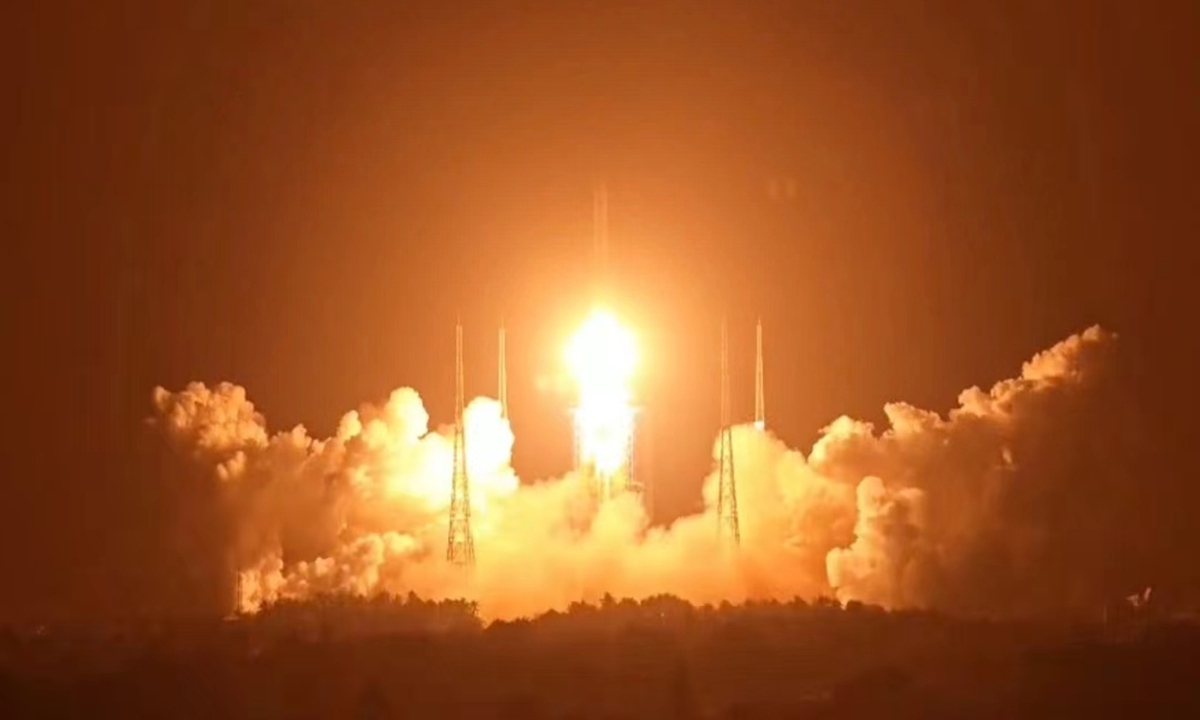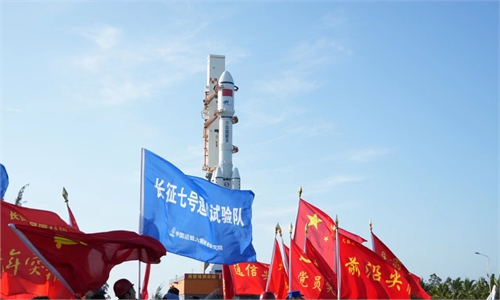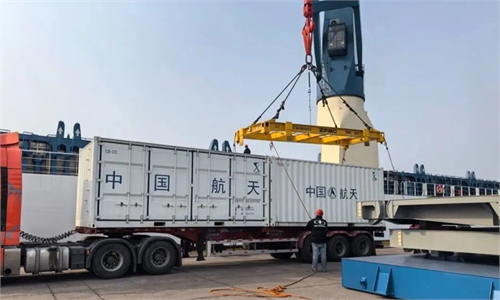China's strongest rocket Long March-5 successfully sends satellite into orbit, embarking on high-frequency launching period in coming years

The Long March-5 is launched from the Wenchang Space Launch Site in South China's Hainan Province on Feb. 23, 2024. Photo: courtesy of Sun Handong
Long March-5, China's most powerful carrier rocket in commission, thundered into the sky from the Wenchang Space Launch Site in South China's Hainan Province at around 7:30 pm, successfully sending the communication technology experiment-11 satellite into preset orbit. This marks China's first space launch in the Year of the Dragon.
The Friday mission marked the seventh flight of China's strongest rocket model and the 11th orbital launching flight of the Long March-5 family, which also includes a shorter variant Long March-5B. The Global Times has learned from the rocket developers with the China Academy of Launch Vehicle Technology (CALT) Friday that the Long March-5 is projected to enter a high-frequency launch period over the next two years.
Lou Luliang, deputy chief designer of the Long March-5 with the CALT, disclosed to the Global Times that it has been scheduled that the Long March-5 will see four launch missions this year, and will maintain this frequency in the coming years, which is intense for a sizable rocket model.
According to Lou, with a 5-meter diameter core stage, the Long March-5 is the largest Chinese rocket in active service, and it also comes with boosters of 3.35-meter diameter (about the same size of the Long March-3B rocket's first and second stages). "The workload of general assembly and testing for a Long March-5 is equivalent to 2.5 to 3 times of that for a conventional rocket model such as the ones of the Long March-3A family."
It is also worth noting that it has been only 70 days since the last orbital launch by the Long March-5, which was on December 15, 2023. In the last mission, the Long March-5 has for the first time used an 18.5-meter-long fairing, setting a new height benchmark for China's carrier rockets in commission. The longer fairing enhances the loading capacity and mission adaptability of Long March-5, and also makes its height exceed that of all Long March launch vehicles currently commissioned.
According to Lou, the launch interval between the two missions is 70 days, but the actual working time in-between is only 43 days. Via the Friday mission, the launch site's preparation time for the Long March-5 has been significantly reduced from over two months to 43 days, and the working time of the launch site will be reduced to 30 days next year, which will leave margin for the implementation of subsequent missions, Lou said.
The Long March-5 made its maiden flight in 2016 and resumed flight operation on December 27, 2019, and in the following three years, the rocket model has successfully launched Tianwen-1 Mars probe, Chang'e-5 lunar probe, the China Space Station Tianhe core module, Wentian and Mengtian lab module into space.
Although 2023 witnessed only one launch mission by the Long March-5, the CALT revealed that relevant mission insiders are already preparing for the 2024 and 2025 frequent mission schedules.
The Long March-5 is expected to engage in four spaceflight missions this year and five next year, these high-frequency launches will probably become a new normal in the coming years, Lou noted.
A senior space expert based in Beijing, who requested not to be named, told the Global Times on Friday that the high-frequency launch by the Long March-5 large rocket carries great significance, as it shows not only that our rocket's launch efficiency is greatly boosted, but also that there is more and more large payload or spacecraft in China, meaning our capabilities of entering space and developing space is growingly robust.
The high-frequency launches of the Long March-5 carrier rocket not only demonstrate the reliability of this series of rockets in terms of performance and technology, but also indicate the increasing scope of China's space exploration projects, Wei Dongxu, a space watcher and TV commentator, told the Global Times on Friday.
The Long March-5 plays a crucial role in the construction and subsequent support of China Space Station, as well as serving as a vital carrier for projects such as the Chang'e lunar exploration. Its success represents a leap forward in Chinese carrier rocket technology and will support further space exploration endeavors in the future, Wei said.
"This also underscores the ongoing development of China's carrier rocket technology, with plans to build new-generation carrier rockets with greater thrust based on the successful experiences of the Long March-5, as the Long March-5 has accumulated valuable technological and design experience, he noted.



